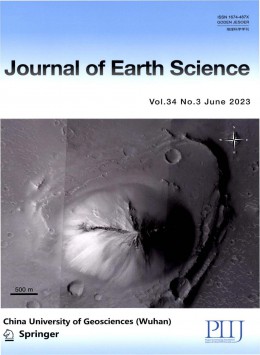如何缩短《Journal of Earth Science》杂志的审稿周期?
来源:优发表网整理 2025-05-20 11:53:44 2943人看过
想要缩短《Journal of Earth Science》杂志的审稿周期需要作者、编辑部和审稿人等多方面的共同努力,作者可以采取一些有效措施,间接地加快审稿进度,提升稿件的处理效率。
建议如下:
一、提高论文质量
(1)严格遵循投稿要求:在投稿前,仔细阅读《Journal of Earth Science》杂志的投稿指南,包括格式要求、字数限制、参考文献格式等。确保稿件符合杂志的规范,避免因格式问题被退回修改,从而耽误时间。
(2)提高论文质量:确保论文的研究内容具有创新性和学术价值,数据准确,论证严谨,语言表达清晰流畅。高质量的稿件更容易通过初审,进入同行评审阶段。
二、选择合适的投稿时机
(1)关注期刊审稿周期:在投稿前,了解《Journal of Earth Science》杂志的审稿周期(预计1-3个月)和发表周期(双月刊),以便合理安排投稿时间。
(2)关注期刊动态:了解期刊的专题征稿或热点话题,针对性地投稿,可能获得优先处理。
三、与编辑部保持良好沟通
(1)主动了解审稿进度:如果超过预计的审稿时间仍未收到回复,可以礼貌地向编辑部发送邮件,询问稿件的审稿进度。
(2)尊重审稿意见:认真对待审稿意见,积极修改论文中的不足之处,共同探讨论文的改进方向。
需要注意的是,缩短审稿周期的前提是保证稿件的质量,不能为了追求速度而牺牲学术严谨性。
《Journal of Earth Science》杂志创刊于1990年,是由教育部主管、中国地质大学主办的学术理论双月刊。国内刊号CN:42-1233/P,国际刊号ISSN:1674-487X。该杂志以推动科学改革与发展、探索科学规律为宗旨,致力于为科学工作者、研究者和管理者提供一个学术交流的平台。
《Journal of Earth Science》杂志投稿建议:
1.Manuscripts are to be written in English and double spaced. The original and two copies of the manuscripts together with the originals and two sets of copies of the figures should be submitted for review purpose. Papers are not to exceed 8 000 words nor to contain more than 7 figures and tables. Large figures and tables should be avoided, and their widths should generally be either 8.0, 16.5 or 24.0 cm. Each illustration should be clearly drawn and lettered.
2.The SI units of metric system should be used.
3.State secrets are not to be released. Authors take full responsibility for their papers.
4.We accept only unpublished, original papers and claim first right of publication. Papers unsuitable for our publication will be returned promptly.
5.Manuscripts should be organized in following order: (a) Title; (b) Name(s) and affiliation(s) of author(s); (c) Abstract (no more than 200 words) and key words (no more than 6); (d) Introduction; (e) Methods, techniques, studied material and area descriptions; (f) Results; (g) Discussion; (h) Conclusions; (i) Acknowledgments; (j) Explanation of plate; (k) References cited; (l) Tables; (m) Figure captions.
Headings
The following sequence should be used:
a.Free-standing capitals, bold, at the margin
b.Free-standing lower-case, bold, at the margin
If a further subdivision is needed, 1, 2, 3, etc., or (1), (2), (3), etc., or a, b, c, etc., should be used.
References Cited
All references cited to publications made in the text should be presented in a list of references following after the text. The manuscript should be carefully checked to ensure that the spelling of authors’ names and publication dates are exactly the
same in the text as in the reference list.
If reference is made in the text to publications written by more than two authors, the name of the first author should be given, followed by “et al.”. This indication, however, should never be used in the list of references. In this list, names of the first three co-authors followed by “et al.” should be given.
References in the text should be arranged chronologically. The list of references should be arranged alphabetically by authors’ names and chronologically per author.
The following system should be used for arranging references.
1.For periodicals
Chough, S. K., Barg, E., 1987. Tectonic History of Ulleung Basin Margin, East Sea (Sea of Japan). Geology, 15(1): 45–58
2.For books
Shrock, R. R., 1948. Sequence in Layered Rocks. McGraw-Hill, New York. 507
3.For multi-author books
Sun, S. S., 1984. Geochemical Characteristics of Archean Ultramafic and Mafic Volcanic Rocks: Implication and Evolution. In: Kroner, A., Lansor, G. N., Goodwin, A. M., eds., Archean Geochemistry. Springer-Verlag, Berlin. 25–46
4.For edited symposia, special issues, etc., published in a periodical
Fox, P. J., Ruddiman, W. F., Ryan, W. B. F., et al., 1971. The Geology of the Caribbean Crust, I. Beata Ridge. In: Heezen, B. C., Kosminskaya, I. P., eds., The Structure of the Crust and Mantle beneath Inland and Marginal Seas.
Tectonophysics, 10: 495–513
Periodical names should be given in full or abbreviated using the International List of Periodical Title Word Abbreviations. In addition, in referring to a personal communication the two words are followed by the year, e.g. “(MeNary, J., personal communication, 1968)”.
Footnotes
Footnotes should only be used if absolutely essential. If possible the information should be corporated in the normal text. If used, footnotes should be indicated by asterisks and kept as short as possible. If references are given in footnotes, full bibliographic data must be given in the list of references, not in the footnote.
All manuscripts should be governed by above information. Otherwise, publication of articles can be seriously delayed because of corrections.
声明:以上内容来源于互联网公开资料,如有不准确之处,请联系我们进行修改。
